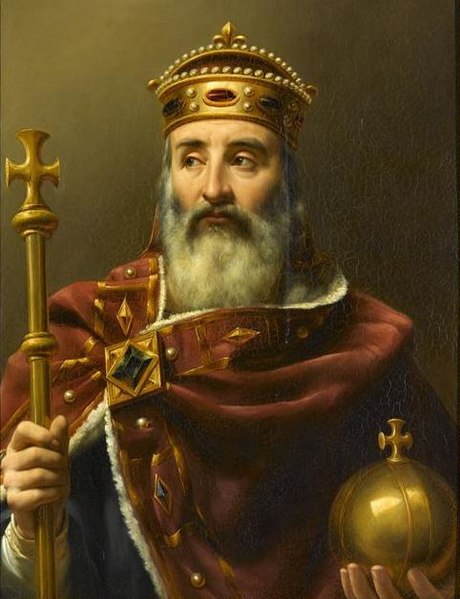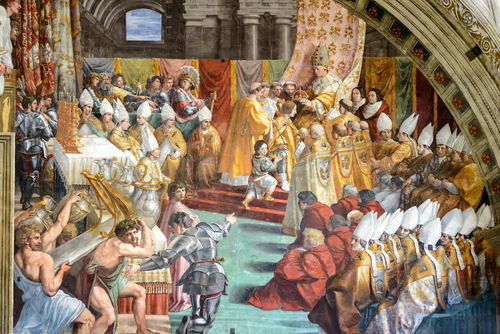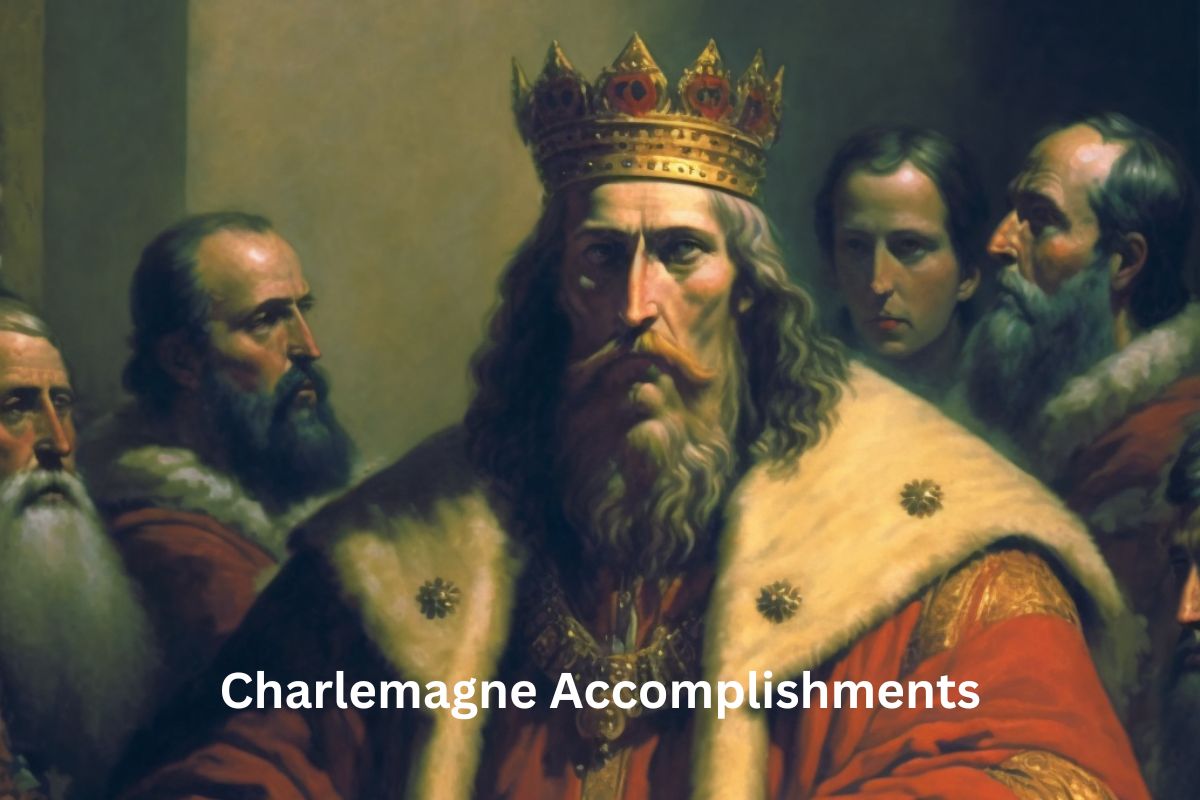Charlemagne, also known as Charles the Great, was a prominent medieval ruler whose accomplishments reverberate through European history.
As the King of the Franks and Lombards, and subsequently crowned as the Holy Roman Emperor, his legacy is marked by a range of achievements that transformed the political, religious, and cultural landscape of early medieval Europe.
From territorial expansion and the promotion of Christianity to fostering cultural revival and implementing administrative reforms, Charlemagne’s impact resonates not only in his time but also in the shaping of the European identity that endures to this day.
Accomplishments of Charlemagne
1. Expanded the Carolingian Empire
Charlemagne significantly expanded the Frankish kingdom’s territory through a series of successful military campaigns. He conquered regions that now comprise modern-day France, Germany, Belgium, the Netherlands, Switzerland, and parts of Italy.
Also Read: Facts About Charlemagne
This expansion not only increased his political power but also brought diverse cultures and peoples under his rule.

2. Became Holy Roman Emperor in 800
One of Charlemagne’s most significant achievements was being crowned as the Holy Roman Emperor by Pope Leo III on Christmas Day in the year 800.
This event marked the first time since the fall of the Western Roman Empire that a ruler was recognized as the emperor of Western Europe.
Also Read: Timeline of the Holy Roman Empire
It symbolized the cooperation between Charlemagne’s Frankish realm and the Catholic Church and solidified his position as a powerful and influential figure in medieval Europe.
3. Spread Christianity throughout his empire
Charlemagne was a devout Christian who saw the conversion of pagan tribes as a crucial part of his mission. He used both diplomacy and force to encourage the conversion of Saxons, Avars, and other pagan groups within his empire.
He established churches, monasteries, and schools, often bringing in scholars and clergy from other parts of his realm to educate the local population.
This promotion of Christianity helped strengthen ties between Charlemagne’s empire and the Church while also shaping the religious and cultural landscape of Europe.
4. Supported the Carolingian Renaissance
Charlemagne’s rule saw a revival of learning and culture, often referred to as the Carolingian Renaissance. He recognized the importance of education and patronized scholars, artists, and writers.
Charlemagne’s court became a center of intellectual activity, where scribes meticulously copied ancient manuscripts, preserving valuable texts from the classical era. This cultural revival contributed to the development of a distinct Carolingian artistic and intellectual style.
5. Established standardized writing
As part of the Carolingian Renaissance, Charlemagne supported the creation of a standardized script for writing, known as Carolingian minuscule. This script was designed to be clear and legible, making manuscripts easier to read and copy.
The introduction of standardized writing had a profound impact on the spread of knowledge, as it improved the consistency and accessibility of written material across the empire.
6. Issued legal reforms (Capitularies)
Charlemagne enacted a series of legal codes known as Capitularies to address various aspects of governance and justice. These laws covered a wide range of topics, including religious matters, social order, trade, and even regulations on hunting and fishing.
The Capitularies aimed to standardize laws across different regions of the empire, ensuring a level of uniformity in administration and justice.
These legal reforms helped in the governance of Charlemagne’s diverse territories and contributed to the development of legal traditions in medieval Europe.

7. Introduced administrative improvements
Charlemagne implemented administrative reforms that aimed to enhance governance and communication within his vast empire. He divided his territories into smaller administrative units, each overseen by a local official called a “count.”
This system allowed for more efficient management of regions and facilitated the collection of taxes, maintenance of law and order, and communication with the central authority. These administrative changes helped to stabilize and unify the diverse territories under Charlemagne’s rule.
8. Contributed to the development of feudal system
Charlemagne’s reign played a role in the evolution of the feudal system, a hierarchical social structure that characterized much of medieval Europe.
To maintain control over his extensive empire, Charlemagne granted land and privileges to loyal nobles and vassals in exchange for their military support and service.
This practice laid the groundwork for the feudal relationships that would become a defining feature of the medieval European social order.
9. Resolved conflicts and promoted stability
Charlemagne’s military campaigns were not solely aimed at conquest; he also sought to establish stability and resolve conflicts in various regions. By subduing rival tribes and incorporating them into his empire, he aimed to create a more peaceful and united Europe.
This approach often involved a mixture of diplomacy, strategic alliances, and the use of force to ensure the security of his realm.
10. Left a lasting legacy for European identity
Charlemagne’s reign left an indelible mark on European history and identity. His efforts to unite diverse cultures, languages, and territories laid the foundation for a shared sense of European identity.
His legacy also influenced later European rulers and leaders who looked back to Charlemagne’s reign as a model of effective governance and cultural revival. The concept of a united Europe, with shared cultural and historical roots, owes a debt to Charlemagne’s vision of a unified Christian empire.
